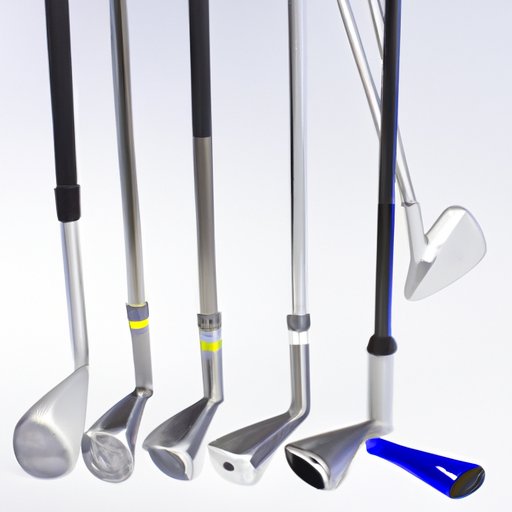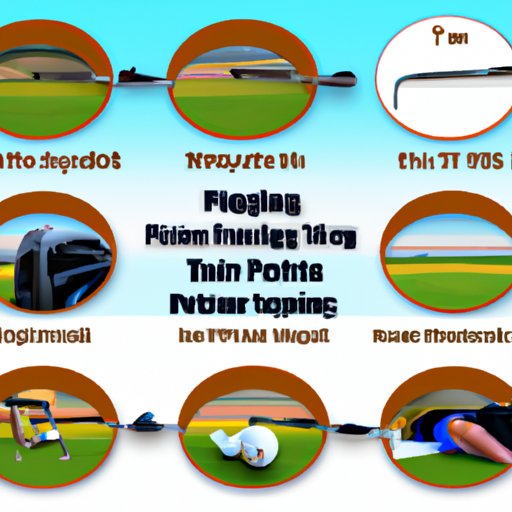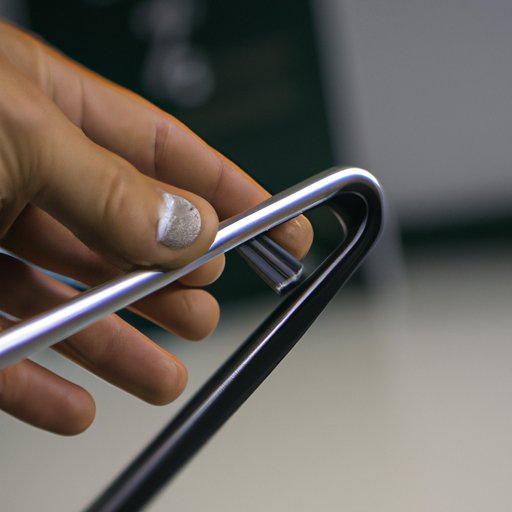Introduction
Golf is a sport that requires precision and accuracy, and having the right equipment is essential for success on the course. Golf club fitting is the process of customizing golf clubs to a player’s individual swing, and it can have a significant impact on their game. Professional golf club fitting is becoming increasingly popular among players looking to get the most out of their game, as well as those seeking to gain an edge over their competition.

Definition of Golf Club Fitting
Golf club fitting is the process of customizing golf clubs to an individual’s unique swing characteristics. During the fitting process, a professional will analyze a golfer’s swing and make adjustments to the clubs that will help them maximize their performance. These adjustments can include changes to the shaft flex, loft and lie angles, as well as the weighting of the club.

Overview of the Benefits of Professional Golf Club Fitting
The primary benefit of professional golf club fitting is improved performance. By having clubs that are tailored to their swing, players can hit the ball farther and with greater accuracy. Additionally, custom-fitted clubs can reduce the risk of injury, as they are designed to minimize strain on the body. Finally, having custom-fitted clubs can provide a psychological boost, as players will have confidence in their equipment.
Describing the Process of a Golf Club Fitting
A professional golf club fitting typically begins with an assessment of the player’s current clubs. The fitter will then use this information to recommend different types of custom fittings. Common types of fittings include driver fitting, iron fitting, wedge fitting, and putter fitting.
Driver Fitting
During a driver fitting, a professional will assess a player’s swing speed, launch angle, spin rate, and other factors to determine the ideal club head design, shaft material, and loft. This can help players hit the ball farther and straighter.
Iron Fitting
An iron fitting focuses on finding the right combination of shaft flex, length, grip size, and lie angle for a player’s unique swing. This can help players hit the ball with greater accuracy and consistency.
Wedge Fitting
A wedge fitting is designed to help players optimize their short game. During this fitting, a professional will assess a player’s swing and recommend the best type of wedge for their game. This can help players hit more accurate approach shots and bunker shots.
Putter Fitting
A putter fitting is designed to help players find the right putter for their stroke. A professional will analyze a player’s putting stroke and recommend a putter that matches their style. This can help players sink more putts and lower their scores.
Comparing the Cost of a Custom Fit to Off-the-Rack Clubs
Custom-fitted clubs can be more expensive than off-the-rack clubs, but the cost is often worth it for serious players. Professional golf club fitting can help players achieve greater accuracy and distance, which can lead to lower scores and more success on the course.

Investigating the Role of Shaft Flex in Performance
One of the most important elements of golf club fitting is choosing the right shaft flex. Shaft flex refers to the amount of bend in the shaft when a player swings the club. Different flexes can have a significant impact on performance, as the wrong flex can cause inaccurate shots or even injury.
Discussing the Impact of Shaft Flex on Performance
Choosing the right shaft flex can have a huge impact on a player’s performance. The flex of the shaft determines how much energy is transferred from the player’s swing to the ball. If the shaft is too stiff, the ball won’t travel as far. On the other hand, if the shaft is too flexible, the ball won’t go as straight.
Analyzing the Benefits of Adjustable Weighting Technology
In recent years, adjustable weighting technology has become more popular in golf club fitting. This technology allows players to adjust the weight of their clubs to match their swing. This can help them generate more power and accuracy with each shot.
Examining Loft and Lie Angles in Club Fitting
Loft and lie angles are two of the most important elements of golf club fitting. Loft is the angle between the face of the club and the ground, while lie is the angle between the sole of the club and the ground. The right loft and lie angles can help players hit the ball farther and straighter.
Exploring the Effect of Loft and Lie Angles on Performance
Selecting the right loft and lie angles can have a major impact on a player’s performance. The right loft and lie angles can help players hit the ball farther and straighter, while the wrong angles can cause inaccurate shots. The correct loft and lie angles will vary depending on the player’s swing and preferences.
Understanding How to Select the Right Loft and Lie Angles
Choosing the right loft and lie angles can be difficult for many players. In general, a player’s clubs should have the same loft and lie angles as their natural swing. However, some players may benefit from making slight adjustments to these angles. A professional golf club fitting can help players find the right loft and lie angles for their game.
Conclusion
Professional golf club fitting can have a major impact on a player’s performance. By having clubs that are tailored to their individual swing, players can hit the ball farther and with greater accuracy. Additionally, custom-fitted clubs can reduce the risk of injury and provide a psychological boost. For serious players, investing in a professional golf club fitting is an excellent way to improve their game.
(Note: Is this article not meeting your expectations? Do you have knowledge or insights to share? Unlock new opportunities and expand your reach by joining our authors team. Click Registration to join us and share your expertise with our readers.)
